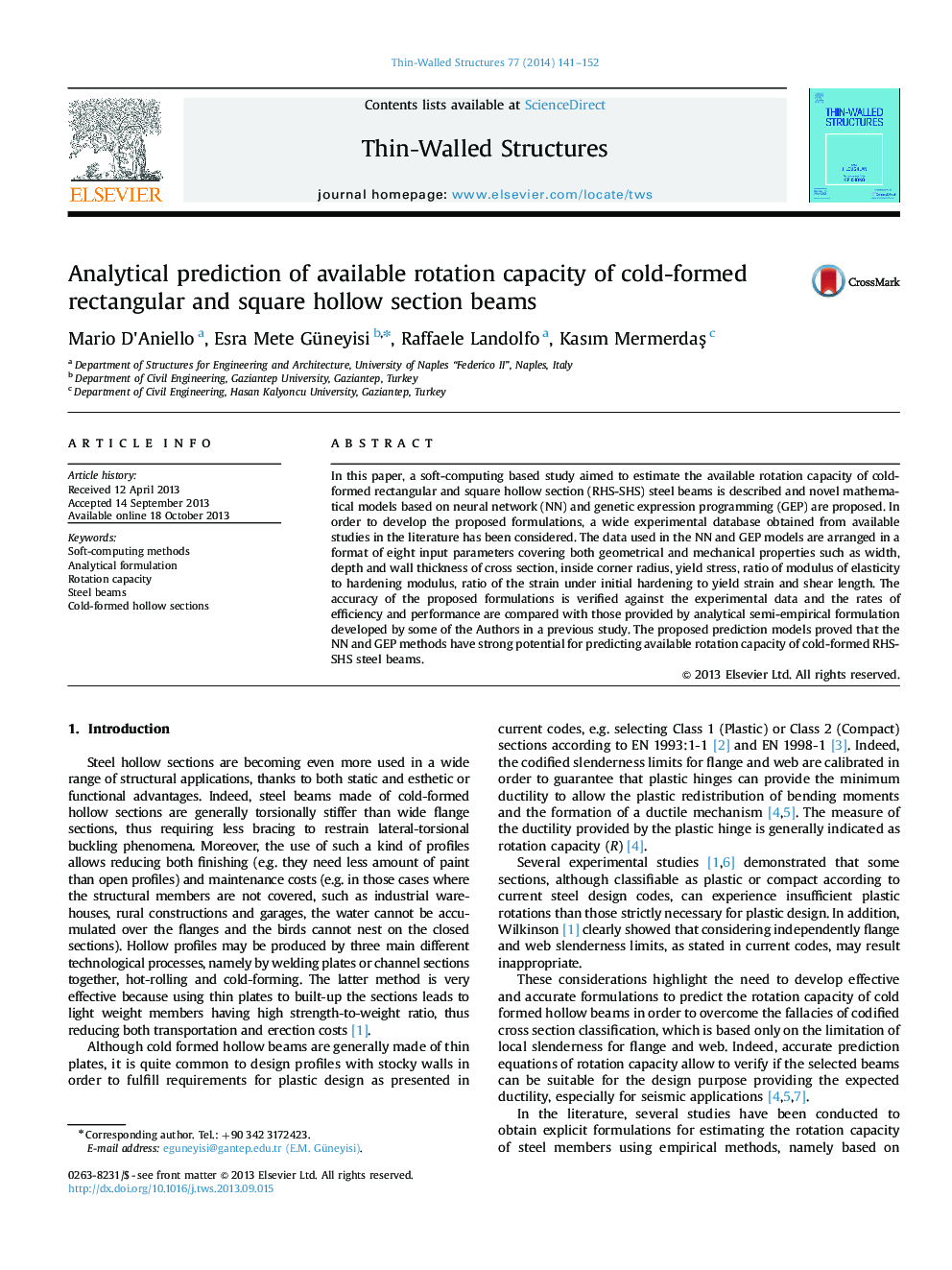| Article ID | Journal | Published Year | Pages | File Type |
|---|---|---|---|---|
| 309052 | Thin-Walled Structures | 2014 | 12 Pages |
•New formulations for estimation of rotation capacity of RHS-SHS beams were proposed.•The models were derived from gene expression programming and neural networks.•The proposed models were compared with an available semi-empirical model.•The performance of models were statistically evaluated and compared.•The proposed models proved to be useful tools in terms of prediction capability.
In this paper, a soft-computing based study aimed to estimate the available rotation capacity of cold-formed rectangular and square hollow section (RHS-SHS) steel beams is described and novel mathematical models based on neural network (NN) and genetic expression programming (GEP) are proposed. In order to develop the proposed formulations, a wide experimental database obtained from available studies in the literature has been considered. The data used in the NN and GEP models are arranged in a format of eight input parameters covering both geometrical and mechanical properties such as width, depth and wall thickness of cross section, inside corner radius, yield stress, ratio of modulus of elasticity to hardening modulus, ratio of the strain under initial hardening to yield strain and shear length. The accuracy of the proposed formulations is verified against the experimental data and the rates of efficiency and performance are compared with those provided by analytical semi-empirical formulation developed by some of the Authors in a previous study. The proposed prediction models proved that the NN and GEP methods have strong potential for predicting available rotation capacity of cold-formed RHS-SHS steel beams.
